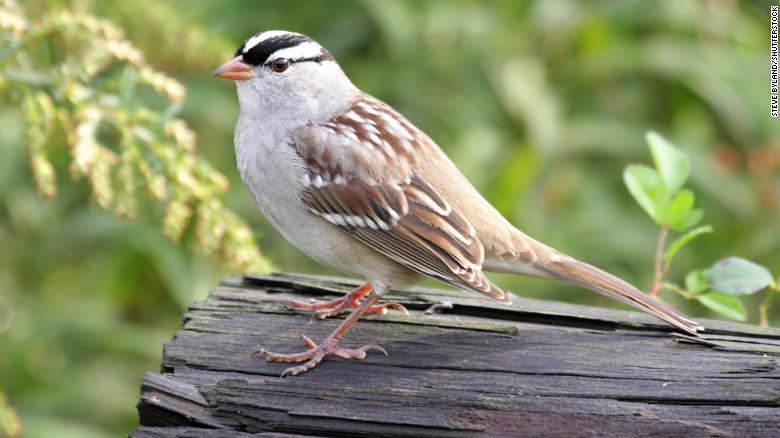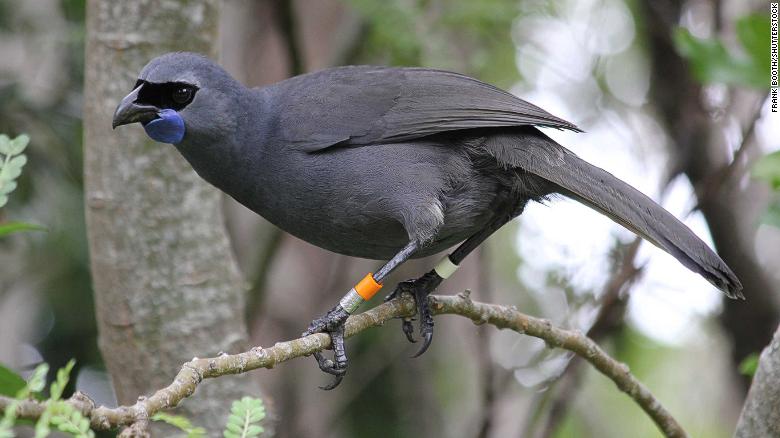Birds aren't all singing the same song. They have dialects, too
Laura Molles is so attuned to birds that she can tell where birds of some species are from just by listening to their song.
She's not a real-world Dr Doolittle. She's an ecologist in Christchurch, New Zealand, who specializes in a little-known area of science: bird dialects.
While some birds are born knowing how to sing innately, many need to be taught how to sing by adults -- just like humans. Those birds can develop regional dialects, meaning their songs sound slightly different depending on where they live. Think Boston and Georgia accents, but for birds.
Just as speaking the local language can make it easier for humans to fit in, speaking the local bird dialect can increase a bird's chances of finding a mate. And, more ominously, just as human dialects can sometimes disappear as the world globalizes, bird dialects can be shaped or lost as cities grow.
The similarities between human language and bird song aren't lost on Molles -- or on her fellow bird dialect experts.
"There are wonderful parallels," said American ornithologist Donald Kroodsma, the author of "Birdsong for the Curious Naturalist: Your Guide to Listening." "Culture, oral traditions -- it's all the same."
The first bird dialect experts
For centuries, bird song has inspired poets and musicians, but it wasn't until the 1950s that scientists really started paying attention to bird dialects.
One of the pioneers of the field was a British-born behaviorist named Peter Marler, who became interested in the subject when he noticed that chaffinches in the United Kingdom sounded different from valley to valley.
At first, he transcribed bird songs by hand, according to a profile of him in a Rockefeller University publication. Later, he used a sonagram, which Kroodsma describes on his website as "a musical score for birdsong." ("You really need to see these songs to believe them, our eyes are so much better than our ears," Kroodsma said.)
These native New Zealand birds have regional dialects
In the 60s and 70s, scientists put baby birds into sound isolation chambers to see if they would be able to sing their songs, according to ornithologist David Luther.
Scientists found that some birds -- the ones that learn their songs -- couldn't sing at all. "They just continued like a baby babble for their entire life," he said. Those birds are known as "true song birds." In other birds, singing was innate. "When they came of age they could just sing a perfect song no problem."
When birds are copying adults, scientists discovered, they sometimes make a mistake. That mistake in turn is copied by other birds, and a local dialect develops. That means that dialects can only exist in true song birds because they have a "learned oral tradition," says Kroodsma.

An adult white-crowned sparrow on a log.
Dialects can also be created as birds adapt to the local environment, said American ornithologist Elizabeth Derryberry. Birds that can be heard better may find a mate better, meaning their song is more likely to be handed down from generation to generation.
It relates to an idea developed by Bernie Krause, the founder of soundscape ecology, that animals make sounds at different pitches so they can all be heard.
Some dialects shift fast -- even within a breeding season. Other birds hold on to their dialects for decades. When Luther researched San Francisco dialects of white-crowned sparrows -- a common bird in North America -- he found that some dialects hadn't changed at all in 40 years.
Dialects and dating (in birds)
For something that is often the result of a copying glitch, dialects can be very useful.
According to Molles, birds communicate for two reasons: Either they are trying to tell off their neighbor, or they are trying to attract females. "Nothing very poetic, unfortunately," she quips.
When it comes to defending territory from other birds of the same species who aren't local to the area, knowing the local dialect allows for more complex interaction. Mimicking a song note for note is seen as aggressive to birds, so having a wider repertoire means a bird can get its point across without escalating the interaction to a fight.
Knowing the local dialect is also useful when it comes to finding a romantic partner.
In many species, it's the male who does the singing. According to Molles, females tend to prefer a familiar dialect -- it suggests the male birds know the local area, has territory, and isn't just "someone who's passing through." Some birds are bilingual, or even trilingual -- perhaps because they have grown up around different local dialects. When they are mating, they'll opt to sing the local dialect of wherever they choose to settle, Luther said.
But not having the right dialect isn't an insurmountable barrier.
Kroodsma gave the example of a prairie warbler in Massachusetts, where he is based, which has returned every year for the past few years. Although the bird has a very atypical song, it attracted females and raised babies every year.
"Someone might say, 'Well there's the novelty effect, a male with a highly different song and all the females think that's sexy,'" he said. "But that's just a wild guess."
It's something that researchers think about in places like New Zealand, where threatened birds are sometimes reintroduced into new areas. Researchers want to be sure that if they reintroduce birds, that they will reintegrate, even if they don't have the right dialect.

A Kokako -- a New Zealand native bird -- in Tiritiri Matangi Island Wildlife Sanctuary.
In Molles' experience, it tends to work if a group of birds are reintroduced at once, so they have fellow birds with an odd dialect.
She was involved in reintroducing Kokako -- a native grey-blue bird with a violin-like call -- into an area of New Zealand hundreds of kilometers away from where they were born. At first, the newcomers might breed among themselves, she said. But in the future, they might integrate. The offspring of the newcomers will likely start interbreeding with the offspring of the original population who grew up familiar with both the new and local dialect.
"The female is not necessarily looking for someone who matches the song that her dad was singing," Molles said. "She's finding a mate who matches the area where she's looking to settle -- he's not just some odd-ball bird who may not belong there."
How humans are changing bird dialects
As cities around the world went into lockdown, a series of questions occurred to Derryberry.
Over the years, birds had begun singing at a higher pitch in cities to be heard over the low hum of traffic and construction. What would happen to the birds when cities went silent? If it was quieter, would the new generation of birds sing at a lower pitch? And next year, when it was time to breed, would they be heard once the city noise returned?
She's still working to answer those questions, but Kroodsma is skeptical that the brief period of quiet could have been long enough to have any impact on bird dialects.
"It was pretty depressing hearing some of those and thinking, We're never going to hear that again."Laura Molles
Even if our coronavirus shutdowns haven't changed bird dialects this time, it's worth thinking about how we are shaping -- and destroying -- bird dialects generally. Something as small as a powerline could be enough to split a population of birds and lead to the creation of a new dialects, Kroodsma says.
In New Zealand, a land of birds where the only native land mammals are bats, there would have been a greater range of dialects before humans arrived and reduced birds' habitat, Molles says.
Molles recalls finding historical recordings of a population of native Kokako that are now gone.
"Some of the songs on those tapes were just amazing -- strange metallic sounds that you would never have even guessed were made by a bird," she said.
"It was pretty depressing hearing some of those and thinking, We're never going to hear that again."
Design and graphics by Jason Kwok and Natalie Leung. Development by Marco Chacón.











